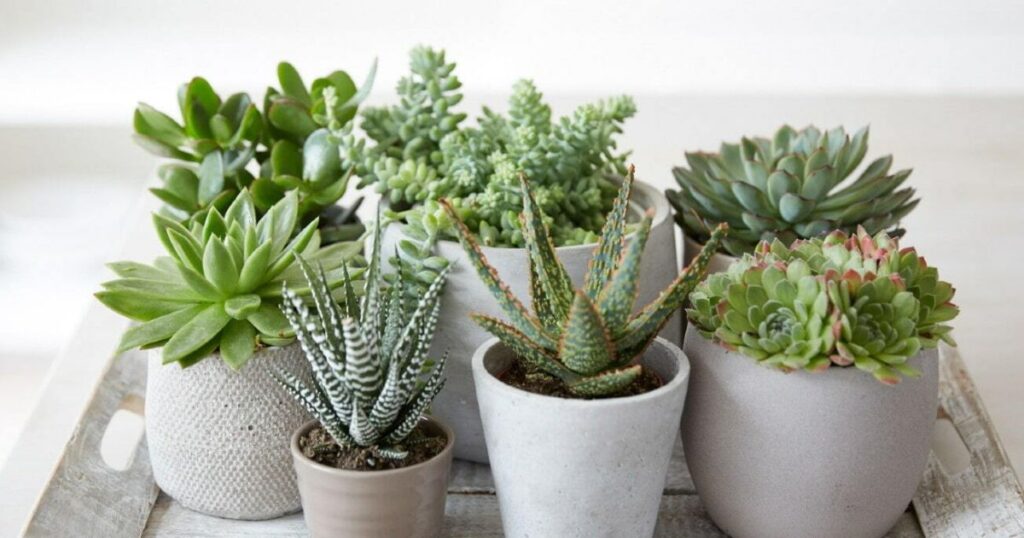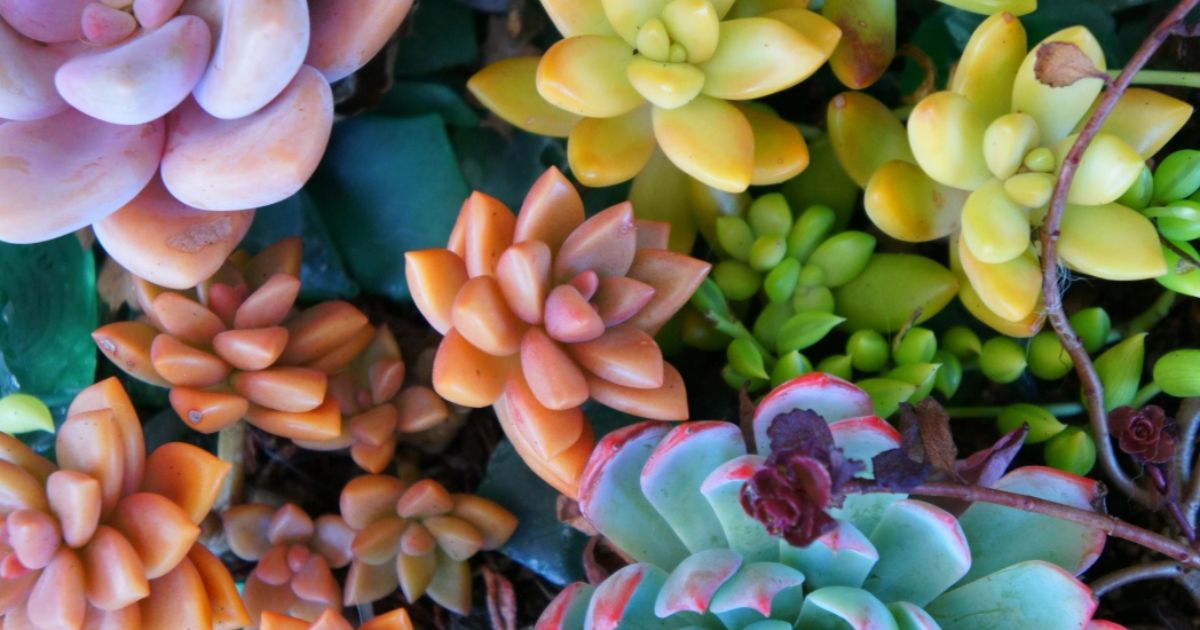Succulents are hardy plants originating from arid regions worldwide, like deserts and semi-arid areas. They’re known for their ability to store water in their fleshy leaves or stems, allowing them to thrive in dry conditions. These plants have adapted to survive in diverse environments, from Africa and the Americas to Asia and Europe. Succulents have gained popularity as low-maintenance houseplants due to their unique appearance and resilience.
Curious about sprucing up your space with vibrant greenery Explore the fascinating world of succulents and discover their origins. Where do succulents come from? Join us on a journey to unravel the secrets of these remarkable plants, and learn how to bring their beauty into your home today.
Succulents, those unique plants, primarily hail from arid regions across the globe, such as deserts and semi-arid areas. They’ve evolved to thrive in low-water environments by storing moisture in their thick leaves or stems. The question, ‘Where do succulents come from?’ leads us to discover their diverse natural habitats.
Understanding Succulents
Before we delve into the geographical origins of succulents, it’s crucial to grasp what makes these plants so special. Succulents belong to a diverse botanical group characterized by their ability to store water in their leaves, stems, or roots. This water storage adaptation allows them to survive and thrive in regions with limited access to moisture. Their unique appearance, with plump, fleshy leaves, sets them apart from other plant varieties. To truly appreciate where succulents come from, we need to first understand their distinct features.
Distinct Features of Succulents (H3)
Thick, fleshy leaves and stems.
Reduced surface area to minimize water loss.
Unique and varied shapes and colors.
High tolerance to drought and harsh environmental conditions.
Origins of Succulents
Succulents can be found on almost every continent, and they have adapted to a wide range of ecosystems. Let’s explore their origins in different parts of the world.
The Birthplace of Succulents (H3)
Southern Africa is often considered the ancestral homeland of succulents, where numerous species can be found.
Countries like South Africa, Namibia, and Madagascar are rich in succulent diversity.
Well-known succulent families, such as Aloe, Euphorbia, and Haworthia, originate from this region.
The Americas: A Hub of Succulent Diversity (H3)
The Americas, particularly North and South America, host a variety of succulent species.
Iconic cacti, like the saguaro cactus, thrive in the deserts of the southwestern United States and Mexico.
Central and South America are home to species like the Echeveria and Sedum.
Asia: Succulents on the Silk Road (H3)
Asia, too, has its own share of succulent diversity.
Countries like China and India have unique succulent species.
The Jade Plant (Crassula ovata), a well-known succulent, originates from South Africa but has been cultivated in Asia for centuries.
Europe: A Surprising Succulent Haven (H3)
While not typically associated with succulents, Europe is home to some hardy species.
Mediterranean regions have succulents like the sempervivum and sedum, which thrive in rocky, arid conditions.
Adaptation to Arid Environments
Succulents have evolved remarkable adaptations to survive in arid and water-scarce environments, which is one of the reasons they can be found on nearly every continent. t succulents are safe for cats is an important consideration for pet owners, as some succulents can be toxic to cats if ingested. Understanding how they thrive in such conditions provides insight into their origin story.
Water Storage (H3)
Succulents store water in specialized cells within their leaves, stems, or roots.
This adaptation allows them to withstand long periods of drought.
The storage tissue is often called parenchyma or aerenchyma, and it’s essential for their survival.
Reduced Leaf Surface (H3)
Succulents have minimized leaf surfaces to reduce water loss through transpiration.
Their leaves often have a waxy coating or cuticle that further conserves moisture.
This adaptation is particularly crucial in arid regions.
Shallow Roots (H3)
Many succulents have shallow but extensive root systems that quickly absorb rainwater.
These roots help maximize water uptake during infrequent rainfall.
The shallow roots also help in anchoring the plant in loose, sandy soils.
Cultural Significance and Modern Appeal

Succulents have held cultural and historical significance in various societies throughout history. From medicinal uses to ornamental decoration, these plants have a diverse range of applications.
Historical Uses (H3)
Indigenous peoples of various regions have used succulents for medicinal purposes.
Aloe vera, for example, has been used for its healing properties for centuries.
Native Americans utilized certain cacti for food, beverages, and tools.
Modern Appeal (H3)
In recent decades, succulents have become highly popular as indoor and outdoor plants.
Their unique appearance, easy care, and adaptability to different environments have made them a favorite among gardeners.
Succulents are often featured in interior design, terrariums, and as low-maintenance houseplants.
Cultivating Succulents
For those interested in bringing succulents into their lives, it’s essential to know how to care for these plants. While they are known for their hardiness, proper care ensures they thrive.
Light Requirements (H3)
Succulents generally require plenty of sunlight.
Place them in a sunny window or provide them with artificial grow lights.
Insufficient light can cause them to become elongated and weak.
Watering (H3)
Succulents should be watered sparingly.
Allow the soil to dry out between waterings, as they are prone to root rot if overwatered.
Water thoroughly when you do water, ensuring that excess water drains from the pot.
Well-Draining Soil (H3)
Use a well-draining potting mix specifically designed for succulents or cacti.
Good drainage is essential to prevent waterlogged roots.
Adding perlite or sand to your soil mix can improve drainage.
Container Selection (H3)
Choose pots with drainage holes to prevent water accumulation at the bottom.
Succulents do well in containers of various materials, from clay to ceramic.
Ensure the container size is appropriate for the plant’s size and growth potential.
FAQ’S
Where are succulents naturally found?
Succulents are naturally found in arid regions worldwide, including deserts, semi-arid areas, and even some coastal regions with low water availability.
Where is the origin of succulents?
The origin of succulents spans diverse arid regions across the globe, including Southern Africa, the Americas, Asia, and even parts of Europe.
Do succulents grow naturally?
Yes, succulents do grow naturally in various arid regions worldwide, adapting to harsh, low-water environments.
How are succulents created?
Succulents can be propagated from leaf or stem cuttings and through seeds. They readily form new plants from these methods, making them easy to grow.
Conclusion
Succulents, with their unique features and adaptations, have origins as diverse as their appearance. From the arid deserts of Africa to the lush landscapes of Europe, these remarkable plants have conquered various ecosystems. Their resilience and low-maintenance nature have made them a favorite choice for both experienced gardeners and newcomers to the world of plants. By understanding where succulents come from and how they adapt to their native environments, we can better appreciate and care for these captivating botanical wonders. Whether as ornamental pieces in our homes or as elements of landscape design, succulents continue to leave an indelible mark on the world of horticulture and interior decor.










